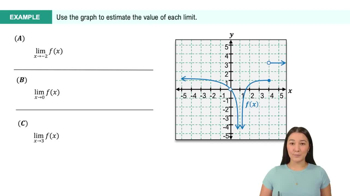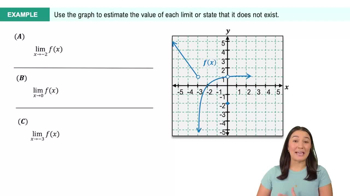Table of contents
- 0. Functions7h 52m
- Introduction to Functions16m
- Piecewise Functions10m
- Properties of Functions9m
- Common Functions1h 8m
- Transformations5m
- Combining Functions27m
- Exponent rules32m
- Exponential Functions28m
- Logarithmic Functions24m
- Properties of Logarithms34m
- Exponential & Logarithmic Equations35m
- Introduction to Trigonometric Functions38m
- Graphs of Trigonometric Functions44m
- Trigonometric Identities47m
- Inverse Trigonometric Functions48m
- 1. Limits and Continuity2h 2m
- 2. Intro to Derivatives1h 33m
- 3. Techniques of Differentiation3h 18m
- 4. Applications of Derivatives2h 38m
- 5. Graphical Applications of Derivatives6h 2m
- 6. Derivatives of Inverse, Exponential, & Logarithmic Functions2h 37m
- 7. Antiderivatives & Indefinite Integrals1h 26m
- 8. Definite Integrals4h 44m
- 9. Graphical Applications of Integrals2h 27m
- 10. Physics Applications of Integrals 3h 16m
- 11. Integrals of Inverse, Exponential, & Logarithmic Functions2h 34m
1. Limits and Continuity
Introduction to Limits
Struggling with Calculus?
Join thousands of students who trust us to help them ace their exams!Watch the first videoMultiple Choice
Use the graph of f(x) to estimate the value of the limit or state that it does not exist (DNE).
limx→−2f(x)

A
−3
B
1
C
4
D
 Verified step by step guidance
Verified step by step guidance1
To estimate the limit \( \lim_{x \to -2} f(x) \), we need to observe the behavior of the function \( f(x) \) as \( x \) approaches \( -2 \) from both the left and the right.
Examine the graph to see if the function approaches a specific value as \( x \) approaches \( -2 \). Look for continuity or any jumps, holes, or asymptotes at \( x = -2 \).
From the graph, observe that as \( x \) approaches \( -2 \) from the left, the function appears to be moving towards a certain value. Similarly, check the behavior as \( x \) approaches \( -2 \) from the right.
Notice that the graph shows a jump discontinuity at \( x = -2 \), meaning the left-hand limit and the right-hand limit do not match.
Since the left-hand limit and the right-hand limit are not equal, the limit \( \lim_{x \to -2} f(x) \) does not exist (DNE).

 6:47m
6:47mWatch next
Master Finding Limits Numerically and Graphically with a bite sized video explanation from Patrick
Start learning





